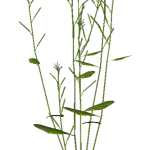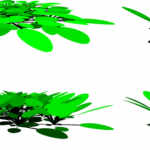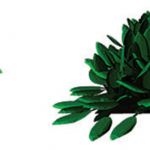Arabidopsis
J. Evers (Wageningen University, Centre for Crop Systems Analysis)
Overview
| Model category | FSPM |
|---|---|
| Plant part | Shoot |
| Scale | Organs, Whole_plant, Field |
| Licence | open_source |
| Operating system | MacOs, Windows, Linux |
| Programming language | Java, RGG, XL |
| Format of model inputs and outputs | Text files |
| Species studied | Arabidopsis |
| Execution environment | Console, Stand-alone application |
| Modelling environment | GroIMP |
Scientific article
Plant neighbor detection through touching leaf tips precedes phytochrome signalsMieke de Wit,Wouter Kegge,Jochem B. Evers,Marleen H. Vergeer-van Eijk,Paulien Gankema,Laurentius A. C. J. Voesenek,and Ronald PierikPNAS, 2012 View paper
Model description
It is a model of Arabidopsis development created from scratch in XL and parameterized using the data provided in Muendermann et al. (2005; https://doi.org/10.1104/pp.105.060483 ). It simulates and realistically visualizes development of aerial parts of the Arabidopsis thaliana plant from seedling to maturity. Part of it is a model of hormonal regulation of branching, taking into account auxin, strigolactone and cytokinin signalling, and the effects of light quality (red:far-red ratio). It simulates plasticity in Arabidopsis branching depending on the light environment, the plant neighbor detection and the manipulation of plant structure (e.g. decapitation). It also simulates various Arabidopsis mutants. The model provides a basis for integrating experimental data and constructing mechanistic models.
Some case studies
Some recent studies using the model of Arabidopsis development:
- Bongers FJ, Evers JB, Anten NPR, Pierik R (2014) From shade avoidance responses to plant performance at vegetation level: using virtual plant modelling as a tool. New Phytol 204:268–272.
https://doi.org/10.1111/nph.13041
- Bongers FJ, Pierik R, Anten NPR, Evers JB (2018) Subtle variation in shade avoidance responses may have profound consequences for plant competitiveness. Annals of Botany 121:863–873.
https://doi.org/10.1093/aob/mcx151



